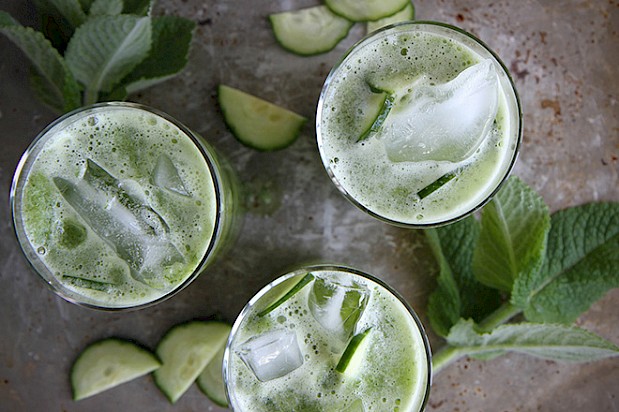
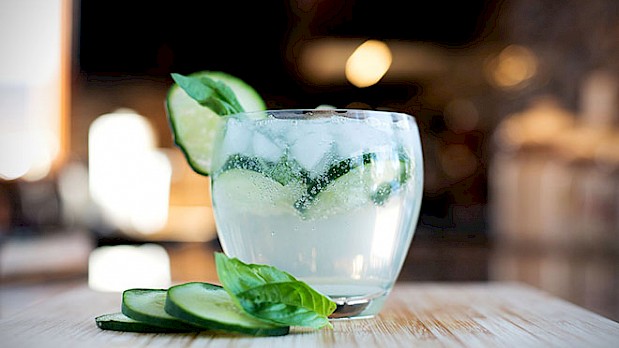
Source: © Graze Belfast
Once dubbed Mother’s Ruin, gin has finally shaken off its seedy image, with trendy herbal versions boosting overall sales by 7%. Let’s face it; a gin and tonic takes some beating as THE drink of choice, on pretty much any occasion. Whether enjoyed as a refreshing aperitif; reclining in the sunshine; escaping the winter chill; or toasting to success... I can't think of a time when you wouldn't opt for the beloved G&T; but I can’t recall the last time I had a straight up ‘gin’ served with ‘tonic’. Believe me this is not a complaint, I totally love gin, but with so many exciting new brands appearing on the shelves (and the more exciting ones lurking under the counter – wink, wink) I’ve been asking – ‘why gin… why now’?
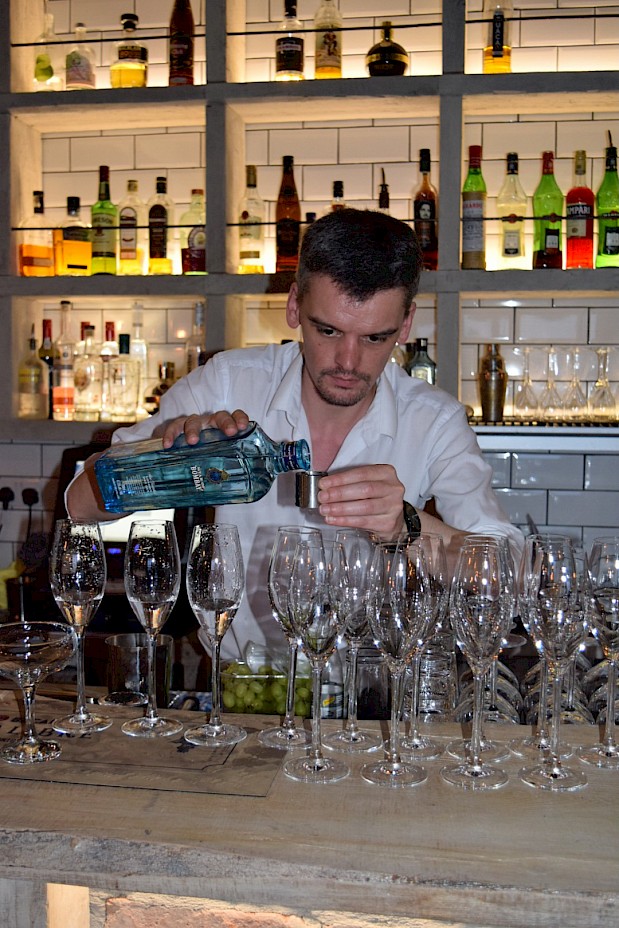
So, in search of some answers, last night I attended my first ever gin club, held in the fabulous private bar, at foodie paradise Graze Belfast (the most intimate and perfect of settings). The event was to feature five very special gins, served in a range of intriguing cocktails created by the barman extraordinaire, David Rowan, and presented by master host and co-owner, Neil Johnston – Eeeekkk, let the fun be #gin!
Before we start, this much I know about gin… There’s gin batch-distilled in a pot, and gin distilled continuously, in a tower, both with the vapour usually passing through a basket of botanicals, to give it flavour; and then there’s gin that’s something akin to diluted, flavoured, neat vodka (the base spirit for most gins). We’ll completely ignore the latter, as this is the last you will hear of it, from me! But the gin club is an exciting and fun way to experience new premium gins, paired with premium mixers and exciting new flavours. For all its refinement, a bad gin cocktail is still one of the worst flavours on the planet.
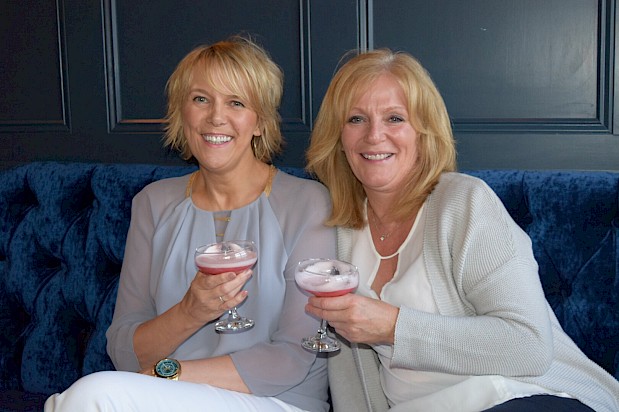
1 First up was G'Vine Floraison Gin, unique amongst our list; in that it uses a base spirit produced from grapes, rather than grain, and is distilled in a pot, rather than a tower. It uses ten botanicals, including juniper, cardamom, ginger and vine flowers, picked in the few days they exist, before turning into grapes; and – as you can well imagine – has a distinct, vibrant and floral flavour.
Created during the cocktail era in the 1920’s and named after a popular nightclub in Chicago, Graze used this gin as the base for a “Clover Club Cocktail” (my absolute favourite drink of the night). G’Vine, Grenadine & egg white.
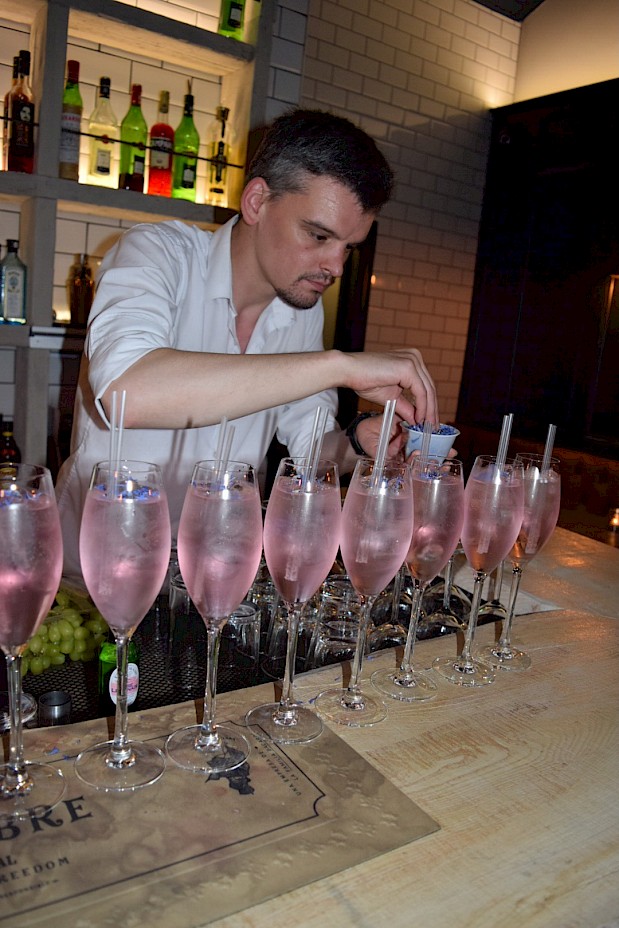
2 Star of Bombay – Bombay Sapphire is undoubtedly the most well known brand, in this list; and the new distillery in Laverstoke has been the inspiration to create a very special addition to the portfolio. A London Dry Gin, the ‘Star of Bombay’ – the actual name of the sapphire to which ‘Bombay Sapphire’ refers - is slow distilled in single batches. The slowed ‘Vapour Infusion’ process extracts a deeper intensity of flavours and aromatics from the twelve botanicals, including bergamot from Sicily and ambrette seeds from Ecuador, together with the traditional flavours of its more widely known stable mate.
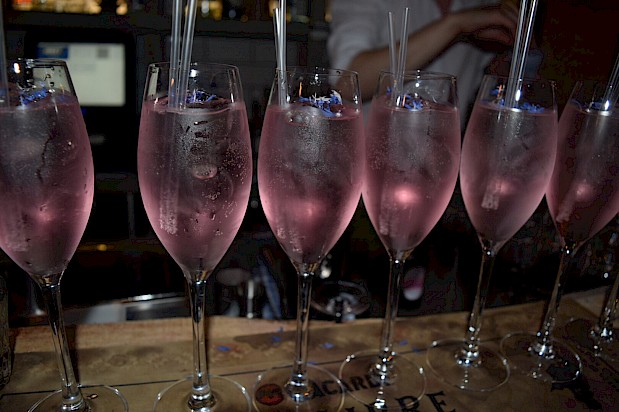
Star of Bombay, Rose Lemonade, build over ice, garnish with bergamot flowers to create a deliciously refreshing ‘Sublime Adventure’.
3 Elephant Gin is a London Dry Gin, distilled using fourteen botanicals, including rare African ingredients sourced from the length and breadth of the continent, to create the gin's distinctive flavour profile; such as the savannah's "super-fruit" Baobab, the Buchu plant with a flavour similar to blackcurrant, and the African Wormwood introducing a sharp floral note. Locally sourced spring water, fresh apples and other select ingredients enhance the purity and smoothness of the gin's finish. As if this wasn’t enough of an enticement, 15% of the profits go towards elephant conservation, which is a strong focus for the company’s founders.
Tom Collins not wild enough for you? Graze added a kick to this classic by adding lychee liqueur, lemon juice, sugar syrup and a dash of chilli bitters to present a “Lychee and Chilli Collins”.
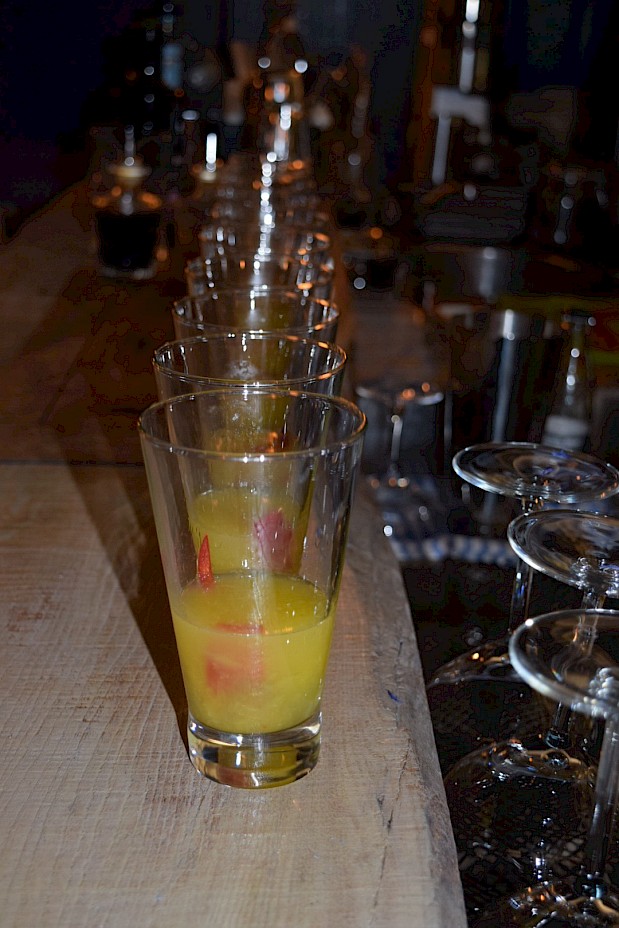
4 Sibling London is a triple-distilled London Dry Gin, created using bespoke, transparent distilling equipment, designed by Sibling, so they can see every aspect of the process, and taking a very ‘Heston Blumenthal’ approach, to gin production. Sibling spares no expense, right down to using the very best Madagascan vanilla, and filtering the spirit through natural fuller’s earth. Unlike most distillers, Sibling produces its own vodka base; and using vanilla, blueberry and citrus, in their ‘basket’ of botanicals, gives this gin a unique flavour, which is fast becoming a favourite with professional mixologists.
Ice, Sibling, Fever-Tree elderflower tonic, blueberries! – Perfection!
Of course there was a ‘sweet’ little showstopper to end the night. The blue flame of alcohol can add excitement to a party, particularly if that flame is intentional…

5 Brockmans Gin – This is simply a very fine, smooth gin. With botanicals of Juniper, blueberries, blackberries, cassia bark, liquorice, lemon peel, coriander, angelica, orange peel, almonds and orris root, it sounds like it would be as good to dab behind the ear, as it is to drink!
Melt butter and sugar in a pan. Add berries and a squeeze of lemon juice. Add a handful of berries, toss in some Brockmans and flambé gently (I said gently). Transfer a little scoop of this loveliness into a small dessert bowl or cup. Add a scoop of vanilla ice cream and some mini meringues. ‘Fire and Ice’ - A devilishly grown up Eaton Mess.

Honestly, I can’t tell you how much fun this night was, and I’ll definitely be back again. The Gin Club costs just £30 for 5 gins and canapés, but keep a look out on their Facebook page for future events, or contact them direct on 02890 658658.
Thanks to Neil, David and the team for a splendid night x
As a slight aside, if you are going to invest in any of the premium gins mentioned above, it seems somewhat tragic to dilute hours of craftsmanship, from these fine distillers, by mixing them with any old rubbish. So, it’s worth parting with a few extra pence to buy a premium tonic such as Fever Tree.
